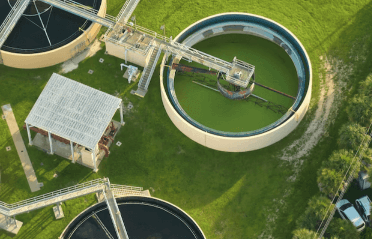Question
a.
An object in motion captures less radiation
b.
Air has a low specific heat and hence it is cooler
c.
More heat is loss by convection and radiation while in motion
d.
Air is transparent to radiation and hence it is cooler than the body
Posted under Heat Transfer
Interact with the Community - Share Your Thoughts
Uncertain About the Answer? Seek Clarification Here.
Understand the Explanation? Include it Here.
Q. On a summer day, a scooter rider feels more comfortable while on the move than while at a stop light because
Similar Questions
Explore Relevant Multiple Choice Questions (MCQs)
Q. What is the value of convective coefficient of oil in case of forced convection?
View solution
Q. A sphere, a cube and a thin circular plate, all made of the same material and having the same mass are initially heated to the temperature of 250 degree Celsius. When left in air at room temperature, what will be their response to cooling?
View solution
Q. Newton-Rikhman law is given by
View solution
Q. The value of film coefficient is dependent upon
(i) Boundary layer configuration
(ii) Geometry and orientation of the surface
(iii) Surface conditions
View solution
Q. The convection coefficients for boiling and condensation lie in the range
View solution
Q. Forced air flows over a convection heat exchanger in a room heater, resulting in a convective heat transfer coefficient 1.136 k W/m² K. The surface temperature of heat exchanger may be considered constant at 65 degree Celsius, and the air is at 20 degree Celsius. Determine the heat exchanger surface area required for 8.8 k W of heating
View solution
Q. A region of fluid motion near a plate in which temperature gradient exist is
View solution
Q. Thermo-physical properties of the fluid are represented by
(i) Density
(ii) Viscosity
(iii) Specific heat
(iv) Thermal conductivity
Identify the correct option
View solution
Q. A motor cycle cylinder consists of ten fins, each 150 mm outside diameter and 75 mm inside diameter. The average fin temperature is 500 degree Celsius and the surrounding air is at 20 degree Celsius temperature. Make calculations for the rate of heat dissipation from the cylinder fins by convection when motor cycle is stationary and convective coefficient is 6 W/m² K
View solution
Q. Air at 20 degree Celsius flows over a flat surface maintained at 80 degree Celsius. The local heat flow at a point was measured as 1250 W/m² .Take thermal conductivity of air as 0.028 W/m K, calculate the temperature at a distance 0.5 mm from the surface
View solution
Q. The convective heat transfer coefficient in laminar flow over a flat plate
View solution
Q. For laminar flow over a flat plate, the average value of Nusselt number is prescribed by the relation
Nu = 0.664 (Re)^0.5 (Pr)^0.33
Which of the following is then a false statement?
View solution
Q. For turbulent flow over a flat plate, the average value of Nusselt number is prescribed by the relation
Nu = 0.664 (Re)^0.5 (Pr)^0.33
Which of the following is then a false statement?
The average heat transfer coefficient increases as
View solution
Q. A nuclear reactor with its core constructed of parallel vertical plates 2.25 m high and 1.5 m wide has been designed on free convection heating of liquid bismuth. Metallurgical considerations limit the maximum surface temperature of the plate to 975 degree Celsius and the lowest allowable temperature of bismuth is 325 degree Celsius. Estimate the maximum possible heat dissipation from both sides of each plate. The appropriate correlation for the convection coefficient is
Nu = 0.13 (Gr Pr)^1/3
View solution
Q. A thin walled duct of 0.5 m diameter has been laid in an atmosphere of quiescent air at 15 degree Celsius and conveys a particular gas at 205 degree Celsius. Base your calculations on one meter length of the duct, estimate the convective coefficient of heat transfer
View solution
Q. Free correction modulus is given by
View solution
Q. The free convection coefficient is given by
h = C₁ d t m/l^(1 – 3m)
The value of exponent for laminar flow is
View solution
Q. For inclined plates we multiply Grashoff number with
View solution
Q. The free convection coefficient is given by
h = C₁ d t m/l^(1 – 3m)
The value of exponent for turbulent flow is
View solution
Q. Which of the following is true for laminar flow?
View solution
Recommended Subjects
Are you eager to expand your knowledge beyond Heat Transfer? We've handpicked a range of related categories that you might find intriguing.
Click on the categories below to discover a wealth of MCQs and enrich your understanding of various subjects. Happy exploring!








